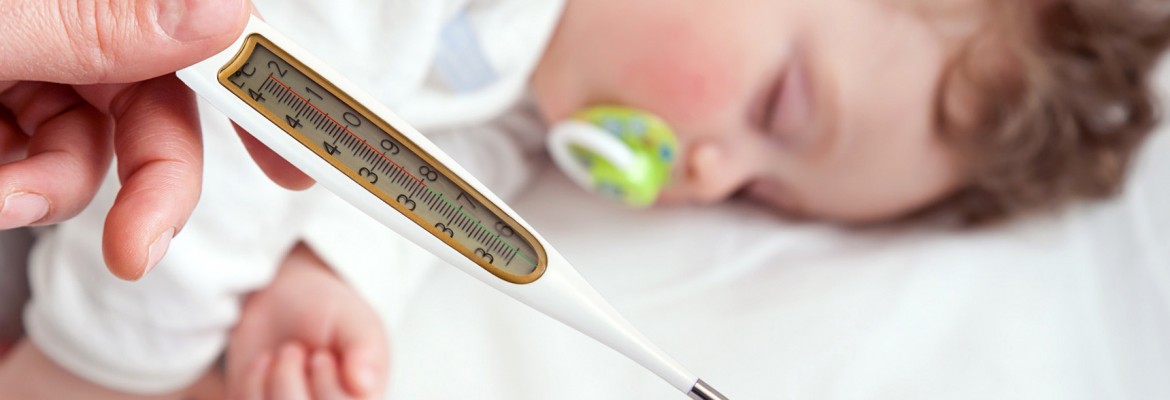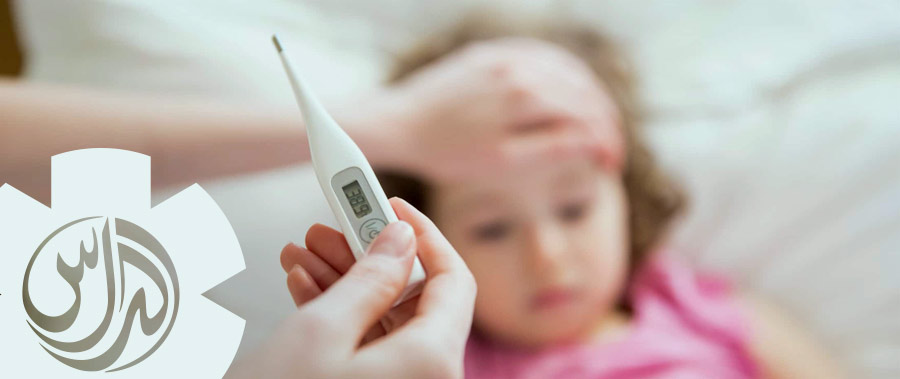Fast Facts About Fevers
Most bacteria and viruses that cause infections in humans thrive best at 98.6 degrees F (37C). Raising the temperature a few degrees can give the body the winning edge. In addition, a fever activates the body’s immune system, accelerating the production of white blood cells, antibodies, and many other infection-fighting agents.
Brain damage from a fever will not occur unless the fever is over 107.6 degrees F (42C) for an extended period of time.
Untreated fevers caused by infection will seldom go over 105 degrees unless the child is overdressed or trapped in a hot place. The brain’s thermostat will stop the fever from climbing above 106 degrees F.
About 4% of children will sometimes have seizures with fever. These febrile seizures are caused by rapid increase in temperature, not by the height of the temperature. Once a child already has a high fever and a febrile seizure, a febrile seizure is unlikely to reoccur with the current illness. In any event, febrile seizures are over in moments with no lasting consequences. Treating fevers early in these children may prevent further febrile seizures.

While 98.6 degrees F is considered the normal core body temperature, this value varies between individuals and throughout the day. The daily variation is minimal in children less than six months of age, about 1 degree in children 6 months to 2 years old, and gradually increases to 2 degrees per day by age six. A person’s baseline temperature is usually highest in the evening. Body temperature, especially in children, is normally raised by physical activity, strong emotion, eating, heavy clothing, elevated room temperature, and elevated humidity. Rectal temperatures below 100.4 degrees F (38C) may be entirely normal (no fever). A rectal temperature of 100.4 or above should be considered a fever. Lower values might be a fever, depending on the child.
A fever does not necessarily need to be treated. If a child is playful and comfortable, drinking plenty of fluids, and able to sleep, fever treatment is not likely to be helpful.
Steps should be taken to lower a fever if the child is uncomfortable, vomiting, dehydrated, or having difficulty sleeping. The goal is to bring the temperature between about 100 and 102 degrees F — not to eliminate the fever.
When trying to reduce a fever, first remove excess clothing or blankets. The environment should be comfortably cool (one layer of light weight clothing, and one lightweight blanket to sleep).
Two medicines are useful for reducing fever in children: acetaminophen and ibuprofen. Acetaminophen is given every 4-6 hours, and works by turning down the brain’s thermostat. Don’t use under three months of age without first having the child examined by a physician. Ibuprofen is given every 6-8 hours, and helps fight the inflammation at the source of the fever. It is not approved for children under 6 months. Both medicines may be given for stubborn fevers, but be very careful about using the correct dose of each.
A lukewarm bath or sponge bath may help cool a febrile child (after medication is given — otherwise the temperature bounces right back up). Cold baths or alcohol rubs cool the skin, but often make the situation worse by causing shivering, which raises the core body temperature.
Fever is a signal that something is going on in your child. Usually this is a minor illness, but it can be a serious infection, such as meningitis. Any child less than 90 days old with a fever should be examined by a physician right away, to rule out a serious infection (unless there was a DPT shot in the previous 24 hours). Children of any age who have a fever 104 degrees or more should also be seen, unless the fever comes down readily with treatment and the child is comfortable. Any child who has a fever and is very irritable, ill appearing, confused, has difficulty breathing, has a stiff neck, won’t move an arm or leg, or who has a seizure should also be seen right away.
Even without the above symptoms, children under 6 months of age with a fever should be examined by a physician within 24 hours (again unless they just had a DPT), since they may have some infection that needs to be treated. Older children with a fever (6 to 24 months old) who are acting well and have no other symptoms should be seen if the fever lasts >48 hours (or >72 hours if they do have minor cold or flu symptoms).
Book a visit 04 452 9998 or by filling the online form
